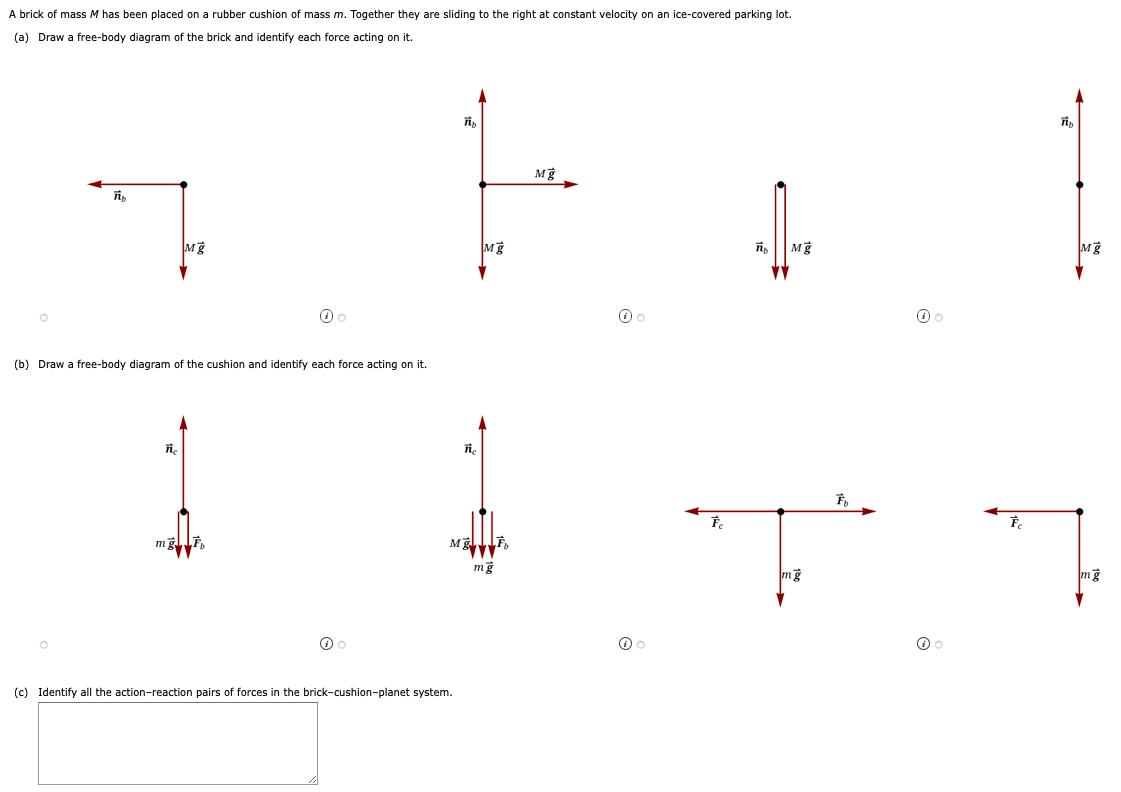A brick of mass M has been placed on a rubber cushion of mass m. Together they are sliding to the right at constant velocity on an ice-covered parking lot. (a) Draw a free-body diagram of the brick and identify each force acting on it. (b) Draw a free-body diagram of the cushion and identify each force acting on it. (c) Identify all the action–reaction pairs of forces in the brick–cushion–planet system.
